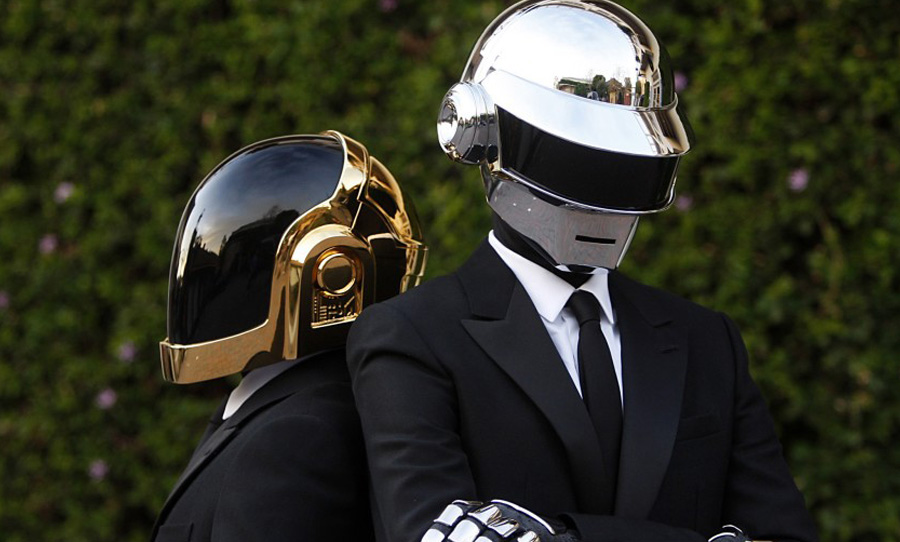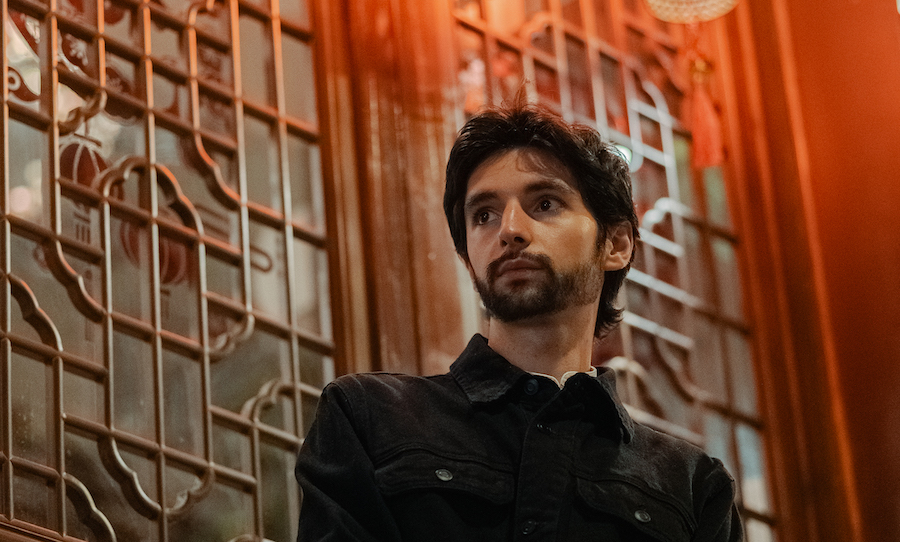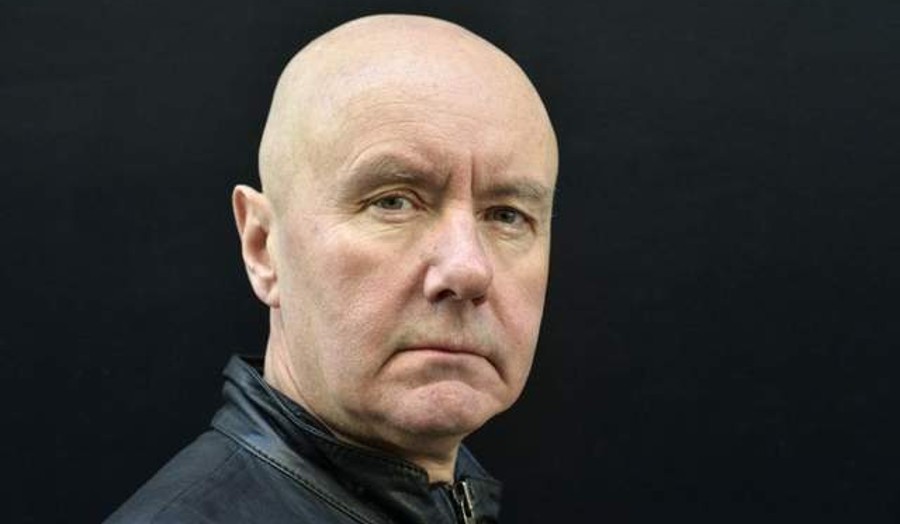With the dissolution of one of the 21st-century’s most influential electronic acts, it’s time to look back at one of Daft Punk’s most daring and eccentric artistic statements.
French electronic pioneers, mystery men (but not robots), pop savants, dancefloor dynamos and global stars, Daft Punk, announced yesterday that they were ending their 28-year experiment of making music on their terms.
Apart from the hits, the collaborations and the philosophical imperatives — they are, after all, French — the duo of Guy-Manuel de Homem-Christo and Thomas Bangalter gave France a renewed place at the international pop table.

In 2013 the Frenchmen achieved something no one thought possible, putting the small — and little known outside the NSW tablelands — town of Wee Waa on the musical map alongside Liverpool, New York, Seattle, Melbourne, Christchurch and the hamlets of London and Paris.
How? Why? I asked; they answered. Sort of. Whatever the thinking thought, it was a madly enjoyable moment.
For now, adieu messieurs, et merci pour tout le plaisir.
Back in 2013…
This is not happening in Wee Waa. This isn’t going to happen in Wee Waa.
It’s true, a lot will happen in the tiny northern tablelands town of Wee Waa next weekend when Daft Punk ‘launch’ their new album, Random Access Memories, at the Wee Waa Show, of which more later.
But for now, I can confirm that Guy-Manuel de Homem-Christo and Thomas Bangalter, who are the French disco-meets-philosophy brains behind Daft Punk, are nowhere near country NSW as we speak. They are in fact not even in the same room, conducting the interview together but apart, at their Parisian homes.
And doing so without helmets.
In private, in small groups of non-camera-carrying people, they appear with hair and flesh and facial features like mere mortals. But otherwise, they are never seen on stage or in photos without the intimidatingly blank full-face bike/space helmets which have earnt them the nickname The Robots, a name used even by collaborators such as Pharrell Williams.
Anonymity rules, even after 20 years — and 14 years since their first massive hits, One More Time and Around The World. Typically though, it’s anonymity with a philosophical, as well as practical purpose.
As de Homem-Christo explains, while they enjoy being able to live normal lifestyles, the masks mean “we’ve been able to create those personalities that are not anonymous that can somehow, support exposure but in a fictional way” in a kind of perfect modern hybrid for the ‘project’ of Daft Punk.
“It feels that this is really a fiction, a show that we designed and with this personality that is definitely part of our project,” says de Homem-Christo who is the quieter of the two but becomes quite voluble when asked if it matters that some people assume that because they are disguised and are not afraid of irony and playfulness, that they are not serious about their craft or their art.
Yes, he says, “there is definitely a certain degree of humour in that but that’s showmanship”. But while they don’t take themselves seriously, “if you respect the audience and on stage, you put on a disguise that is part of the show” and that is understood.
It’s a point taken up by Bangalter, who says that along with the masks, a career which has only had four albums and infrequent tours “has given people an understanding that our intent is not to take advantage of them or of the situation”.
“It feels like over these 20 years we behaved ourselves with a certain definition of radicality, a certain artistic integrity,” Bangalter says. “We feel a bit like it’s almost a cliche of a family dinner where we have a family member that never speaks at the table but when they speak everybody takes a listen. We feel a bit like that.
“That’s just the nature of things: if you don’t communicate that much, when it happens people tend to notice more.“
Still, de-Homem-Christ confesses, “to tell you frankly, we don’t really worry about … what the audience might think”.
“When we make a piece of music we don’t worry whether they will like it or not: we are really trying to create the music that we want to listen to as individuals,” he says. “We think it’s the healthiest way. We say that we are the guinea pigs of our experiment, we are doing things on ourselves, and if the audience can enjoy it as much as we do then that’s great. If they don’t, that’s not a big deal.
“It’s another offering, another invitation of entertainment among many, many invitations that are available these days.”
The new Daft Punk album, which in theory will be heard for the first time in Wee Waa on Friday — though keep an eye on the internet this coming week for leaks, official or otherwise — is perhaps the best example of de Homem-Christo and Bangalter making music for themselves.
From the musical and cultural references (the unlikely Pink Floyd and Fleetwood Mac touches, to the less surprising Giorgio Moroder talking about his career over the sound of classic late ‘70s disco) and guest artists (Pharrell Williams, Julian Casablancas of The Strokes, soft pop songwriter Paul Williams, and disco giant Nile Rogers), we are getting an insight into their musical loves and major influences and the pair’s “slightly utopian idea of making co-exist many, many different things together”.
“We are really music lovers and art lovers,” says Bangalter. “Guy-Man and I met almost 27 years ago when we were early teenagers and our friendship was sealed over a love of art and music. This record somehow, it’s true, is like a teenager’s fantasy of trying to create something with musicians and artists that inspired us and that are keeping on inspiring us today and have also saved us as human beings and musicians.”
It’s not just musicians either, with the technical crew and backing musicians on the album — drawn from old favourites as well as current recordings — and the album conceptualised as a radical (for modern dance-focused recordings at least) example of using real sounds, bodies and instruments alongside technology as a way to capture ‘the magic’.
“Our first three records were made with discrete hardware and analogue electronic components and musical instruments which we would make connections and try to use in different ways. We felt we would not be stimulated by making music on a computer just because it felt either easy or lazy,” says Bangalter. “Also, we were interested in the idea of transmission of the craftsmanship. In this idea of transmission, we said that there was something interesting about recreating the circumstances, going back to these magical places, these iconic recording studios and working with these engineers.
“It was not just favouring the past but it was important for us to have first-hand witness of this era, this golden age, to guide us.”
Wee Waa? Yes, seriously.
While Daft Punk won’t be there in person and they had never heard of the NSW country town until a few months ago, the suggestion from the local record company that they launch the album during the Wee Waa Show fit the conceptual brief the Frenchmen had drafted.
“It felt for us that this record has a certain aspect of random quality and also the idea of breaking the barriers between cities and the countryside or between the musical genres or any sort of classification. So we thought that this [Wee Waa launch party] was a poetic idea,” Thomas Bangalter says. “This album was made on the grounds of doing things in music that are triggering imagination and this can be a certain arrangement in a song triggering imagination or in the same way the idea of launching music in a small town in Australia is by itself part of the fictional narrative that feels like it’s a scene of the film.”
The only thing that could make it better is if on the night they somehow could beam down, via hologram maybe, into Wee Waa and greet us as visitors from the planet Daft Punk.
“You know with the imagination there is no limit,” he says teasingly. “The problem is if you meet people’s expectations or not.”
“Technology is fascinating, it’s mostly the subject of everything we have done artistically over the last 20 years, the exponential curve of the importance of technology. That’s why we use the robot personalities because we felt the robots are a metaphor of technology,” says Bangalter. “The concept of the robot encapsulates both aspects of technology: on one hand it’s cool, it’s fun, it’s healthy, it’s sexy, it’s stylish; on the other hand it’s terrifying, it’s alienating, it’s addictive and it’s scary. That has been the subject of many science-fiction literature.”
The main problem Daft Punk have with technology in and outside the studio today is the idea that it would make room for humans to focus on more important things when in fact it makes everyone lazier.
“The problem with it is this misconception that it is this series of tools that are becoming extremely integrated with every human being on a very intimate level, this extension in everybody’s hand and everybody’s pocket,” says a sceptical Bangalter. “But because you can store on your small, connective devices all this information that you don’t need to store in your brain, it doesn’t mean that we’re going to use our brain in a much more clever way; rather it is the opposite.”



